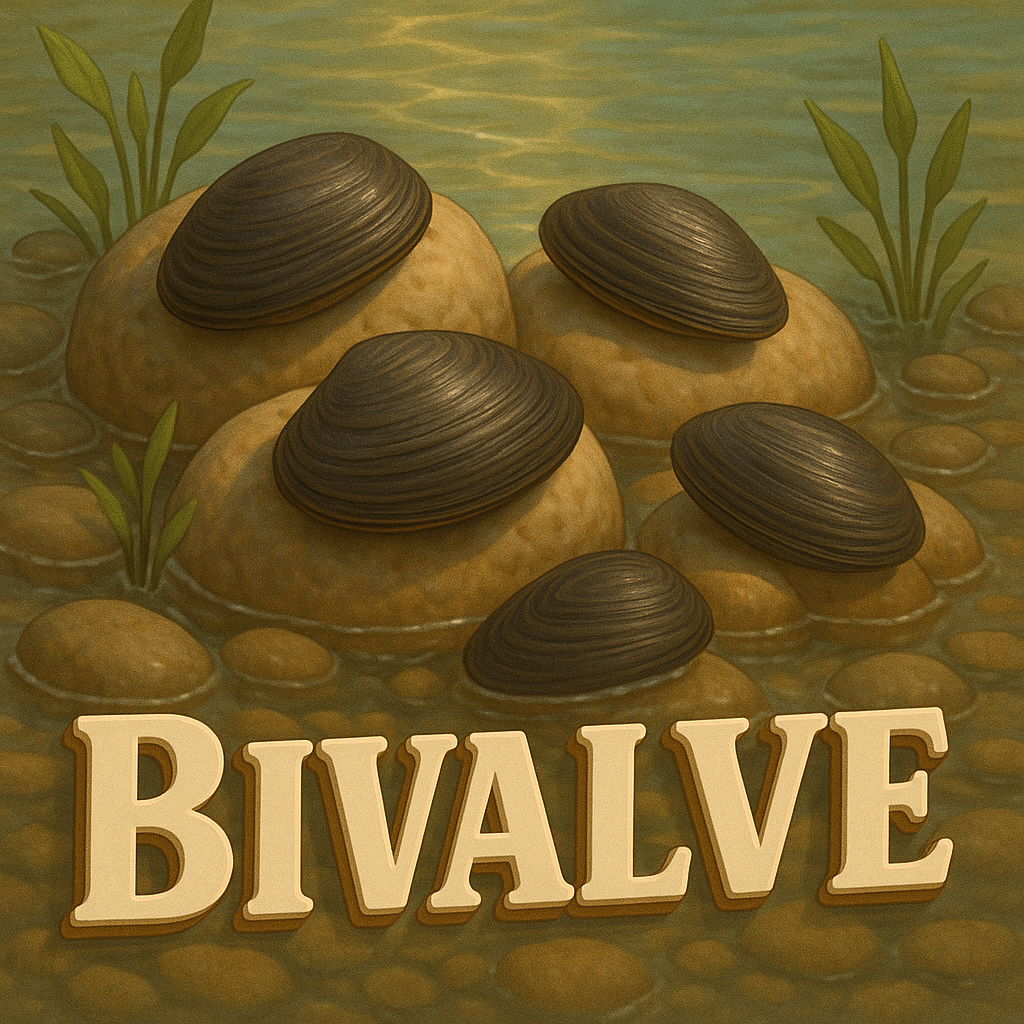Bivalve
Definition
Bivalve refers to any mollusk of the class Bivalvia, characterized by a shell consisting of two hinged valves; it includes clams, oysters, mussels, and scallops. Its plural form is bivalves.
Parts of Speech
- Noun
Pronunciation
American English
- IPA: /ˈbaɪvælv/
- Respelling: BYE-valve
British English
- IPA: /ˈbɪvælv/
- Respelling: BI-valve
Etymology
Mid 19th century: from bi- “two” + Latin valva “leaf of a door, folding door,” referring to the two-part shell.
Derivatives
- Bivalvia (noun: the class name)
- bivalved (adjective)
- bivalvular (adjective)
Synonyms
- lamellibranch (alternative scientific term)
Antonyms
- univalve (a mollusk with a single shell)
Usage
"The tidal flats were covered with countless bivalves such as clams and cockles."
"Oysters are filter-feeding bivalves prized for their pearls."
Related Terms
- Mollusk: The phylum that includes bivalves, gastropods, and cephalopods.
- Bivalvia: The class comprising all bivalve mollusks.
- Gastropod: A class of mollusks with a single shell or none (snails, slugs).
- Cephalopod: A class of mollusks with tentacles (octopus, squid).
- Hinge: The ligamentous joint connecting the two valves of a bivalve shell.
Detailed Definitions
Noun
- A mollusk with a two-part hinged shell – aquatic invertebrate whose shell consists of two calcareous valves joined by a flexible ligament.
- Example: "Scallops are free-swimming bivalves that clap their shells to move."
- Any member of the class Bivalvia – the taxonomic group including clams, oysters, mussels, scallops, and related species.
- Example: "Freshwater bivalves such as mussels play important roles in river ecosystems."
Bivalve








